It feels a bit contradictive that something you want to get rid of and do not want
to come back can be so beautiful. This is what I thought when I saw
the striking colours of the Mistletoe flowers in my mango tree. If the plant would be left
undisturbed it would slowly further infest and weaken the mango tree
and spread to other trees in the area. Before I cut out the infested
branches I made some pictures.
Though fungi do not
belong to the group "plants", I added some on this page.
Mistletoe
Latin: Decaisnina stenopetala?
Family: Loranthaceae
Indonesian: Benalu
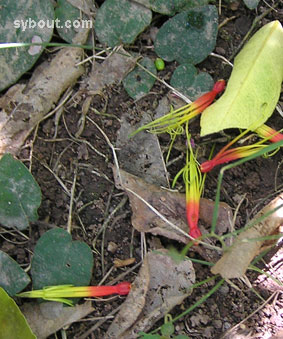
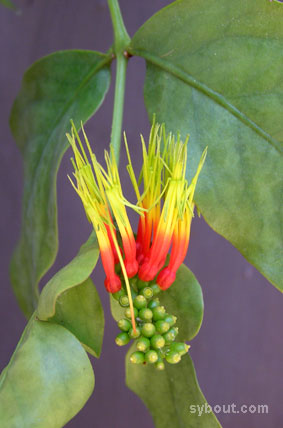
One day I found under the mango tree in my
garden bright coloured dropped flowers that I did not recognise. I was sure it
was from a plant not present in my garden. To my surprise the plant
grew right above my head in the mango tree. It was a Mistletoe
species that lived on
(and in) some of the branches of its host. Later I found more plants
growing on my citrus tree with the same kind of thick wrath-like lumps
(called haustoria) at the places where the parasites enter the branches.
Actually the 'Mistletoe" is a partial parasite (hemiparasite). Its
roots penetrate into the host's tissue and absorb water and
nutrients, but its leaves produce sugar through photosynthesis. The
flowers of this mistletoe are beautiful bright red, yellow and
green. According the book "The Ecology of Sulawesi" - Whitten et al,
the flowers of Mistletoes in Makassar are pollinated by visiting
flowerpeckers that carry pollen sticking on their bill base to other
flowers. The sticky fruits of the Mistletoe are eaten by the same
birds who spread these via their droppings. The 'glue' of the fruits
is said not to be digested by the flowerpeckers, what makes the
fruits easily stick to branches. And here is where the seeds
geminates and the new life cycle begins.
Just after germination
the leaves of this species
Mistletoe are small and stand upright. Older plants develop next to
stiff branches drooping twigs
that in case of the mango tree clearly differ from the branches and
leaves of the host plant. In
older mango trees it can be a risky job to remove the parasites from
higher parts. Often the way out is just to cut these branches at the
point where climbing is still safe.
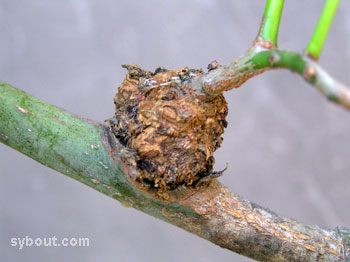
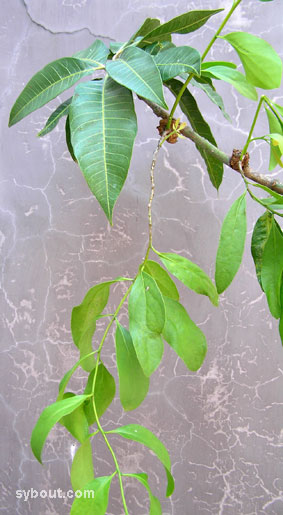
Determining the species
As I had no idea what kind of
mistletoe was growing in my garden, I started searching the
internet. Soon I found out that the species belongs to the
Loranthaceae family, but to my surprise I learned that this family
has 73 genera and about 900 species! Differences between the species
are not always that clear, even the more because a species can have
a wide variation in flower colour. So, it is probably impossible to
get any further without being a specialist or having the right
literature. I contacted Dan Nickrent,
a botanist and professor at the Southern Illinois University
Carbondale (USA) who is interested in Loranthaceae. This enthusiastic person gave prompt reply and
ample explanation. He identified the species as
Decaisnina stenopetala, but will need more information to make sure that
no mistakes are made (an other similar species is D. zollingeri). I can imagine that with about 900 species in the family, identification from photographs can be difficult.
Unfortunately my efforts to get rid of this parasite have been
successful and is there no material left for more detailed
identification.
Fungi
Indonesian: Jamur
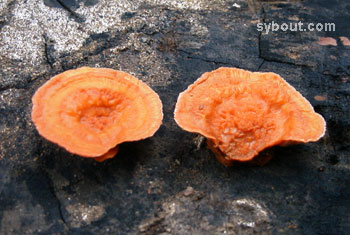
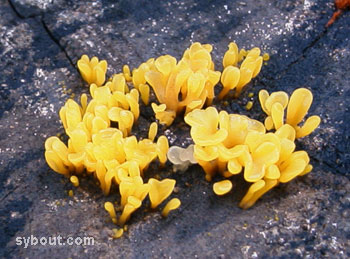
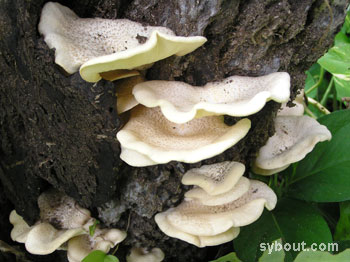
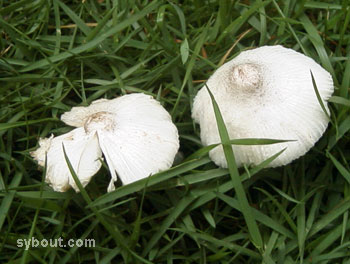
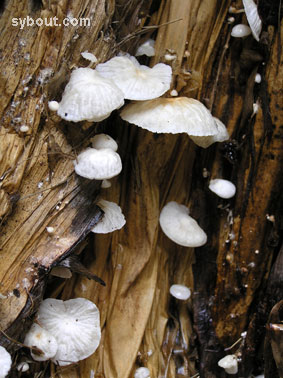
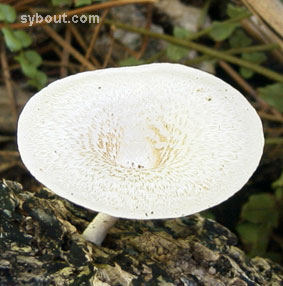
Now and then fungi show up in my garden. They come in a wide variety of shapes and colours. Unfortunataly I cannot find any information on the fungi in the photos
shown here. Identification of species will be difficult because most
fungi only appeared once and did never show up again. Anyhow,
whatever their name, I think they are attractive and interesting, and are an important addition to the always changing
garden life.